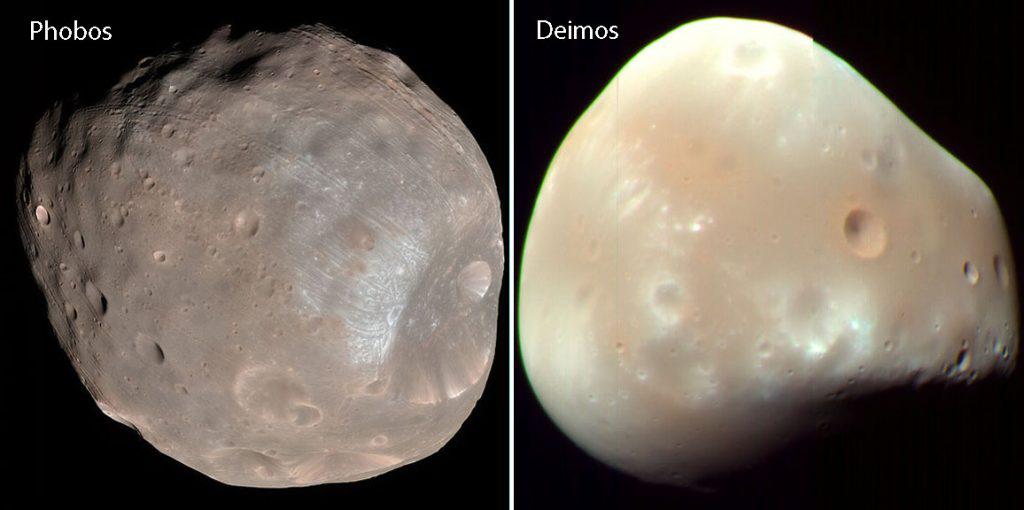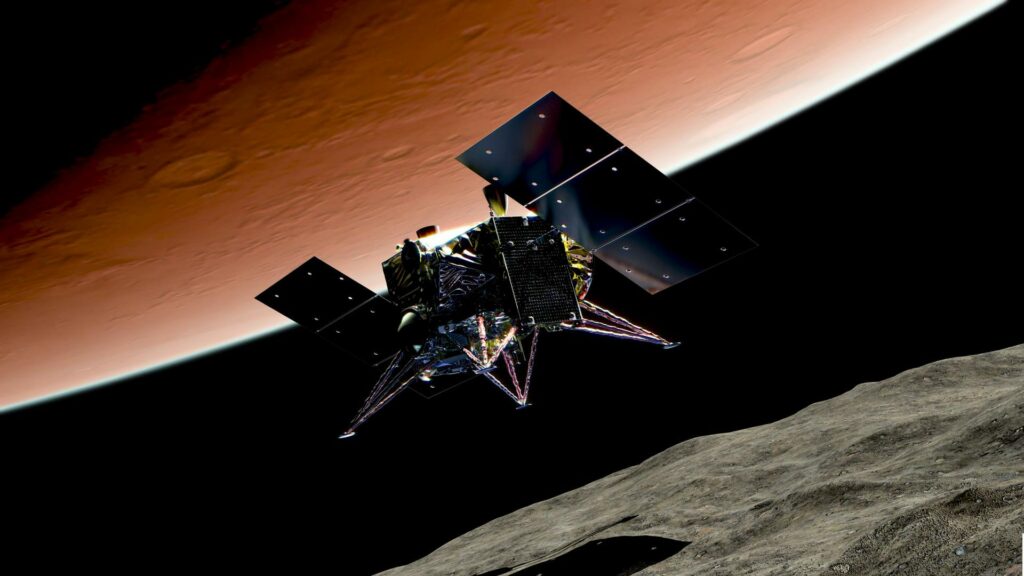The Martian moons Phobos and Deimos cannot be fragments left over from the destruction of a larger body. This is evidenced by the results of a recent study published by an international team of astronomers.
Mystery of the origin of Phobos and Deimos
The origin of Phobos and Deimos is a long-standing mystery for astronomers. Initially, it was believed that they were asteroids captured by the gravity of Mars. This is indicated by the irregular shape of the moons and the fact that the spectrum of their surface is similar to the spectra of many asteroids.

However, over time, astronomers have accumulated enough data indicating that the Martian moons are unlikely to be trapped bodies. Therefore, scientists have put forward several alternative hypotheses. According to one of them (the so-called impact version), Phobos and Deimos were formed from material knocked out from the surface of the Red Planet as a result of the fall of a large asteroid. According to another, they are fragments left after the collapse of the destruction of a larger moon.
An international team of researchers decided to test the last assumption. Scientists have created a series of simulations that showed that in such a scenario, with a probability of more than 90%, Phobos and Deimos would have collided with each other within only 100 thousand years after the collapse of the original body. This event would have led to the formation of a ring, the remnants of which would have been observed to this day.
MMX Mission
The mystery of the origin of the Martian moons may be revealed by the Japanese MMX (Martian Moons eXploration) mission, which is scheduled to launch in 2024. Its main target will be Phobos. The device will have to land a rover on the surface of the moon, as well as take and then deliver to Earth a sample of its soil.

Scientists hope that the MMX sample delivered will help solve the mystery of the origin of Phobos and Deimos. If its isotopic analysis shows a match with the isotopic composition of the Martian soil, this will become a weighty argument in favor of the impact version.
Earlier we published a video of a solar eclipse on Mars with the participation of Phobos.
According to https://phys.org
Follow us on Twitter to get the most interesting space news in time
https://twitter.com/ust_magazine

